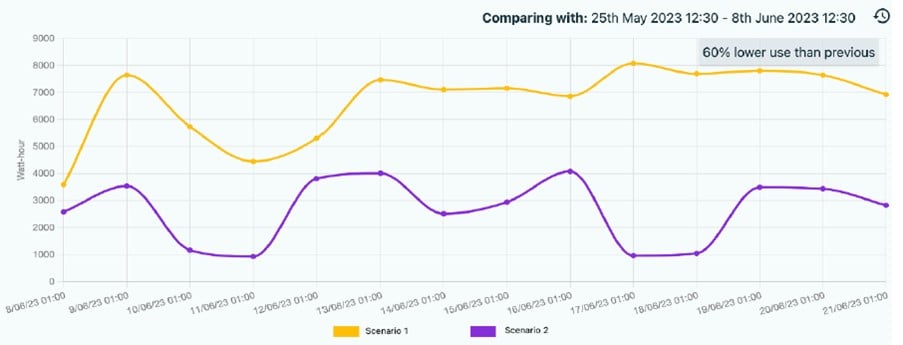
Discover how MSc student, Joseph Jacob, tested our technology and reduced our office’s CO2 emissions by 38% and overall energy use by 60%!
Our energy use behaviours
The way we consume power is putting a strain on the National Grid which is becoming a growing concern that needs to be addressed. In the UK alone, 11% of all energy use is attributed to commercial buildings. This demand for energy has continued to increase as device use has skyrocketed, despite new appliances being more energy efficient.
So, what can we do to reduce consumption with such high demand?
That’s where waste comes in.
Research has shown that our largest proportion of energy waste is associated with baseload, the minimum amount of electricity required to power devices. Essentially, the energy used by devices left on standby or switched on when they aren’t being used. If we reduce our waste, we can minimise our electricity costs and eliminate the carbon emissions that are generated from our consumption.

Lots of methods have been introduced to educate people about energy use and what they can do to reduce this, like smart meters. Although these have seen success in residential settings, they’re less effective in commercial buildings – especially when occupants are not the ones paying the bill! They also require a lot of human intervention, with people manually having to turn devices off.
But what if we could cut out the middle person completely? That’s what I set to find out using measurable.energy’s sockets.
Establishing the groundwork
I completed an experiment to monitor small power use in measurable.energy’s office over a four-week period.
Throughout this time, I measured the energy use of devices and the carbon emissions they produced, using two sets of conditions. First, leaving sockets switched on all day and second - automatically turning sockets off on the weekend, and from 8pm to 9am on weekdays, in addition to highlighting carbon intensity through LED lights.
Some of the devices monitored included:
Device Typical power consumption, Coffee machine 1,000W Printer 1,500WTV screen1,200W
The proof is in the pudding
The use of measurable.energy’s rulesets to automatically turn devices off resulted in the energy use during non-working hours being completely eliminated, leading to significant electricity bill savings and a reduction in carbon emissions.
60% reduction in energy use
38% reduction in carbon emissions

Figure 1: Graph showing a 60% reduction in energy use when devices are automatically switched off using measurable.energy’s plug sockets.
Automation is the way forward
Relying on human intervention to turn off equipment one by one isn’t a consistent way to reduce electricity use and carbon emissions. We must use technology like measurable.energy’s sockets to ensure our consumption is regulated and waste eliminated.
